First let's give right name to this relationships:
In Use Case Diagram, between use cases, you can define 3 relationships:
- Include
- Extend
- Generalization
Then Warn You About Use Cases
Use Cases are text stories which shows interaction of "actors" with system in order to reach a "goal".
So instead of asking "is it okay to use use this relationship or not, first write your use case scenarios. You do not have to ( and should not) write all of them in details. Work in an iterative way.
Check The Life Cycle of a Use Case
Include RelationShip
While you are writing use cases, if you see that some steps in use case scenarios , occur again and again.[ many times] then extract repeating steps a separate use-case, then reference it from the other use cases using "include" relationship. [to avoid repetition]
Or you may use "include" relationship to decompose a long use case into smaller sub units. [Be careful, avoid functional decomposition]
Extend Relationship
You have an optional behavior in use case base based on a condition. But many times, while you are writing your use cases, you have a Extensions sections and without showing extend relationship in a diagram, you can just record-write optional behavior in that [Extensions] sections. But if you think optional behavior is important and should be seen on use case diagram, then show it on diagram with extend relationship
Generalize Relationship
If you are a novice modeller stay away from Generalize Relationship. It is interpretation [ how to write its text story ] is somehow problematic.
If wanted to get more info Check Chapter Using Generalization between Use Cases of the book
Use Case Modeling,Kurt Bittner Ian Spence or Patterns for Effective Use Cases , Steve Adolph, etc... [ Section 7.5. CapturedAbstraction—A Pattern for Applying UML Generalization, by Dan Rawsthorne]
About Sample Diagram:
The "Rent video" and "Charge credit" card relationship is technically legal since it is said that Rent Video use case include "Charge Credit" : In order to rent a video you should always charge credit card. And this step[Charge Credit] is also repeating by Pay Late Fee use case. [according to your diagram]
And discount is "optional" based on a condition [may be if you take more than 3 you have] so "extend" is also technically legal.
But you have unnecessary lines , which I do not understand.

Final Advice:
Do not waste your time on Use Case Diagrams to much.The important thing is use case scenarios. And when possible use minimum relationships in your use case diagrams.
